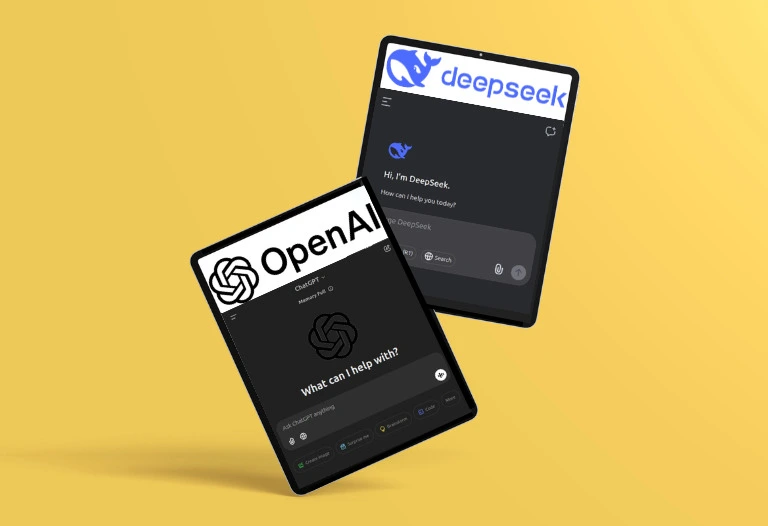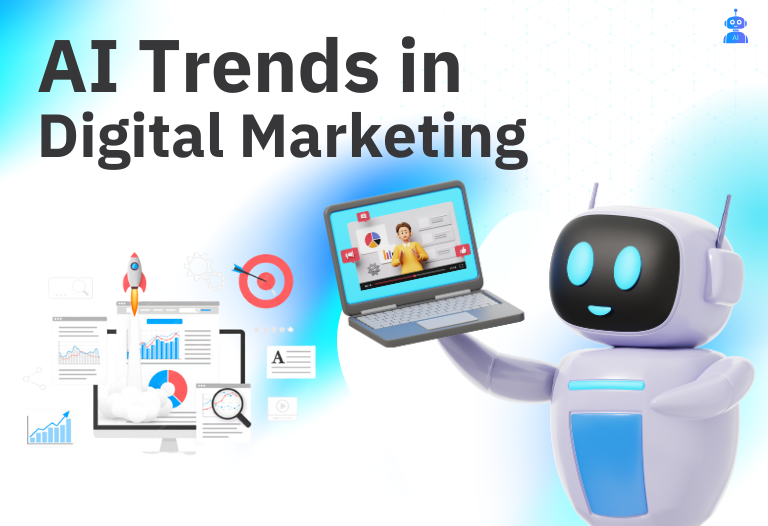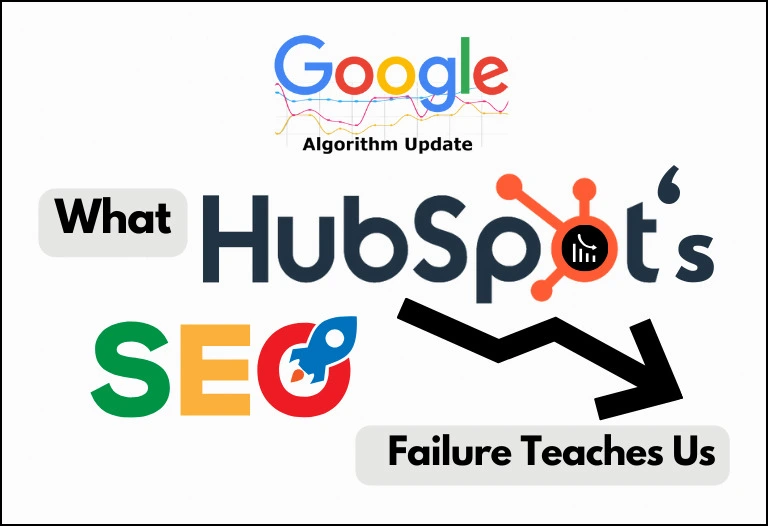
The artificial intelligence (AI) landscape is experiencing a transformative shift as new contenders emerge to challenge established leaders like OpenAI. One such formidable player is DeepSeek, a Chinese AI startup that has rapidly ascended in prominence. The DeepSeek vs. OpenAI rivalry is intensifying, shaping the future of AI advancements and competition.
Since the situation is changing rapidly, you can expect a lot of updates on our Primotech platform as we look closely into the changing trends.
Recent Developments: Allegations and Market Reactions
In late January 2025, reports surfaced that Microsoft and OpenAI were investigating potential unauthorized data acquisition by individuals linked to DeepSeek.
According to Reuters, Microsoft’s security researchers detected suspicious activity involving substantial data extraction using OpenAI’s API. This raised concerns that DeepSeek may have illicitly obtained proprietary information from OpenAI.
An OpenAI spokesperson highlighted ongoing attempts by various entities to replicate U.S. AI advancements, emphasizing the need for collaboration with the U.S. government to safeguard intellectual property.
The emergence of DeepSeek’s advanced AI model, R1, has also had significant financial repercussions. Global investors feared that this cost-effective Chinese AI model could threaten the dominance of established AI leaders.
This sentiment contributed to a notable decline in the stock prices of major tech companies, including a record market-cap loss for NVIDIA.
Language Models and Capabilities
OpenAI’s GPT series, particularly GPT-4, has been lauded for its advanced natural language understanding and generation capabilities. These models have found applications across various sectors, including content creation, customer support, and data analysis.
DeepSeek’s R1 model has garnered attention for its reasoning abilities, performing on par with OpenAI’s o1 reasoning model.
DeepSeek achieved this with a fraction of the resources, utilizing less advanced hardware and adopting an open-source approach. This strategy has enabled rapid development and widespread adoption, with DeepSeek’s AI assistant surpassing ChatGPT in downloads on the U.S. App Store.
Let’s dive a bit more into this for a clearer picture!
OpenAI’s GPT Series
OpenAI has made significant strides in the field of generative AI with its GPT series. From GPT-3 to GPT-4, each iteration has demonstrated remarkable improvements in contextual understanding, text generation, and task execution.
These models have been widely adopted across industries, revolutionizing how businesses and individuals interact with AI.
Key Features of GPT-4
Advanced Natural Language Understanding (NLU): GPT-4 deeply comprehends complex language structures, enabling it to handle intricate queries and generate coherent, contextually appropriate responses.
Multimodal Capabilities: Unlike its predecessors, GPT-4 supports multimodal inputs, allowing it to process both text and image-based prompts, making it more versatile for applications such as creative design, data visualization, and educational tools.
Domain-Specific Adaptability: The model can be fine-tuned for specialized applications in industries like healthcare, legal analysis, finance, and software development, significantly enhancing productivity and efficiency.
Large-Scale Training Data: GPT-4 has been trained on an extensive dataset sourced from diverse domains, giving it a broad knowledge base and enabling it to generate highly accurate and contextually relevant content.
Ethical and Safety Enhancements: OpenAI has implemented better guardrails to reduce bias, misinformation, and harmful outputs, addressing concerns raised in earlier versions.
Due to these advancements, GPT-4 has been widely adopted in customer service automation, content creation (blogs, articles, marketing copy), programming assistance (coding suggestions, debugging), and AI-driven analytics. Its success has solidified OpenAI’s position as a leader in AI research and commercial AI applications.
DeepSeek’s R1 Model
Despite OpenAI’s dominance, DeepSeek’s R1 model has managed to challenge the status quo by achieving comparable performance to OpenAI’s O1 reasoning model—despite using significantly fewer resources.
Key Strengths of DeepSeek’s R1 Model
Strong Reasoning Capabilities: One of the standout features of R1 is its ability to process and reason through complex logical tasks effectively. This makes it highly suitable for problem-solving applications, particularly in areas such as mathematics, coding, and scientific research.
Efficient Resource Utilization: Unlike OpenAI’s reliance on cutting-edge hardware, DeepSeek has optimized its model to function with less advanced chips, such as NVIDIA’s H800, instead of the high-performance A100 and H100 chips used by OpenAI.
Open-Source Approach: DeepSeek has embraced transparency by sharing significant portions of its AI research, model architectures, and training methodologies. This has allowed developers worldwide to collaborate, refine, and integrate DeepSeek’s technology into various applications.
Localized Language Capabilities: While OpenAI’s models are heavily trained on English-language data, DeepSeek places a stronger emphasis on multilingual capabilities, particularly in Mandarin and other Asian languages, making it more effective in non-English-speaking markets.
Cost-Effective AI Deployment: By optimizing its models for lower hardware requirements, DeepSeek enables businesses, startups, and independent developers to implement AI-powered solutions without the prohibitive costs associated with premium AI services like OpenAI’s enterprise API plans.
How DeepSeek Surpassed ChatGPT in the U.S. App Store
A particularly striking development in DeepSeek’s rise to prominence has been its overwhelming success in consumer adoption. DeepSeek’s AI assistant recently outperformed OpenAI’s ChatGPT in the number of downloads on the U.S. App Store, signaling a shift in user preferences and market trends.
Factors Contributing to DeepSeek’s Growth
Freemium Model and Accessibility: OpenAI’s ChatGPT, particularly its premium version (ChatGPT Plus), comes with a subscription fee, whereas DeepSeek has positioned itself as a more accessible alternative with a freemium model that provides a robust experience without requiring immediate payment. This strategy has attracted casual users and developers looking for a cost-effective AI solution.
Mobile-First Optimization: DeepSeek has focused heavily on mobile-friendly AI interactions, optimizing its assistant for seamless smartphone performance. In contrast, OpenAI’s ChatGPT mobile app, while powerful, still leans towards desktop-centric use cases, making it less appealing for mobile-dominant users.
Local and Personalized AI Services: Unlike OpenAI, which predominantly caters to global markets with generalized AI models, DeepSeek has leveraged region-specific training data to enhance its accuracy and relevance for local users. This has resonated particularly well with users in Asia and non-English-speaking regions, where DeepSeek outperforms OpenAI in language fluency and contextual accuracy.
Integration with Popular Applications: DeepSeek has successfully integrated its AI assistant into widely used Chinese apps and platforms, driving adoption among millions of users who might not have considered standalone AI products like ChatGPT. This seamless integration has led to organic growth and high engagement rates, further propelling its popularity.
Regulatory and Geopolitical Factors: With increasing regulatory scrutiny on foreign AI firms operating in China, OpenAI has faced roadblocks in expanding its reach within the Chinese market. In contrast, DeepSeek enjoys domestic regulatory support and has been able to establish partnerships with major Chinese tech firms, giving it a significant competitive advantage.
DeepSeek’s Potential to Disrupt OpenAI’s Market Share
The rapid rise of DeepSeek has prompted industry analysts to reassess OpenAI’s market position. While OpenAI still leads in overall AI innovation and enterprise adoption, DeepSeek’s approach presents a viable alternative that could reshape the competitive landscape.
Advantages DeepSeek Holds Over OpenAI
Affordability and Accessibility: DeepSeek’s cost-effective models make AI more accessible to a wider range of users, particularly in emerging markets where expensive AI subscriptions are less viable.
Transparency and Open Source: By sharing its research openly, DeepSeek is fostering a collaborative AI ecosystem, which could accelerate advancements in AI technology more rapidly than OpenAI’s proprietary approach.
Localized Optimization: DeepSeek’s emphasis on non-English languages and regional data gives it an edge in specific markets that OpenAI has yet to fully penetrate.
Government and Industry Support: With strong backing from Chinese tech giants and government agencies, DeepSeek benefits from significant funding and strategic partnerships that enhance its AI infrastructure.
Challenges DeepSeek Faces Against OpenAI
Despite its impressive growth, DeepSeek still faces hurdles that could limit its ability to overtake OpenAI in the global AI race entirely:
Hardware Limitations: OpenAI’s access to state-of-the-art NVIDIA GPUs gives it a significant computational advantage. DeepSeek, while resource-efficient, may eventually face constraints as AI models become more complex.
Regulatory Scrutiny and Global Expansion: DeepSeek’s ties to China may limit its adoption in Western markets due to concerns over data privacy and geopolitical tensions. OpenAI, being a U.S.-based company, has fewer hurdles in securing partnerships with Western enterprises.
Enterprise-Grade AI Services: OpenAI’s API services are deeply integrated into corporate workflows, making it difficult for businesses to switch to alternative AI providers like DeepSeek without significant adaptation efforts.
Geopolitical Implications and Intellectual Property Concerns
The rise of DeepSeek has heightened geopolitical tensions, particularly concerning allegations of IP theft. The U.S. government has accused Chinese companies of engaging in such practices, leading to increased scrutiny and export restrictions on advanced technologies.
China has denied these allegations and emphasized the development of homegrown technologies to reduce reliance on foreign suppliers. DeepSeek’s advancements exemplify this effort, showcasing China’s growing capabilities in the AI sector.
Furthermore, the ongoing allegations of IP theft contribute to the escalating tech tensions between the U.S. and China. As both nations vie for dominance in the AI sector, these disputes could lead to further decoupling of their tech industries, with broader implications for global trade and technological collaboration.
Allegations of Intellectual Property Theft
Recent reports indicate that OpenAI and its partner Microsoft are investigating whether a group associated with DeepSeek improperly obtained data output from OpenAI’s technology.
OpenAI claims to have evidence that DeepSeek used its technology to develop a competing AI model. These allegations have led to heightened scrutiny of DeepSeek’s practices and have intensified the ongoing tech rivalry between the U.S. and China.
U.S. Export Restrictions and China’s Response
The U.S. government has implemented stringent export controls on advanced technologies in response to concerns over IP theft and to curb China’s technological advancements. These measures include restrictions on advanced AI chips, cloud access, and model weights, aiming to limit China’s capability to produce cutting-edge AI technologies.
China has countered these restrictions by investing heavily in its domestic AI industry. Companies like DeepSeek have adopted innovative approaches to overcome the limitations imposed by export controls.
For instance, despite using less advanced hardware, DeepSeek has developed AI models that rival those of its U.S. counterparts, demonstrating China’s resilience and determination to achieve self-reliance in critical technologies.
Impact on Businesses and the IT Industry
The competition between DeepSeek and OpenAI is influencing businesses and the IT industry in several ways:
Cost and Accessibility: DeepSeek’s focus on affordability and open-source solutions makes AI technology more accessible to small and medium-sized enterprises, potentially disrupting OpenAI’s market share.
Potential Use Cases: Both companies’ models have applications in customer support, content creation, and data analysis, among other areas.
Market Dynamics: The emergence of competitive models like DeepSeek’s R1 may drive innovation and lead to more diverse AI offerings.
The rivalry between DeepSeek and OpenAI reflects a broader shift in the AI landscape, with emerging players challenging established leaders. This competition could lead to increased innovation, more accessible AI solutions, and a reevaluation of strategies among major tech companies.
As the AI sector continues to evolve, businesses, governments, and we as individuals will need to navigate this dynamic environment, balancing the benefits of technological advancements with considerations of security, ethics, and equity.
Leverage AI for Your Business with Primotech
As the AI landscape evolves rapidly, businesses must stay ahead by integrating cutting-edge AI and data solutions. Whether you’re looking to enhance customer engagement, automate workflows, or gain deeper insights from your data, Primotech can help.
At Primotech, we specialize in AI development, data analytics, machine learning solutions, and custom AI integrations tailored to your business needs. Our expertise ensures that you leverage AI effectively—whether it’s through AI-driven chatbots, predictive analytics, or workflow automation.
Want to explore how AI can transform your business? Get in touch with Primotech today, and let’s innovate together!




 January 30, 2025
January 30, 2025









